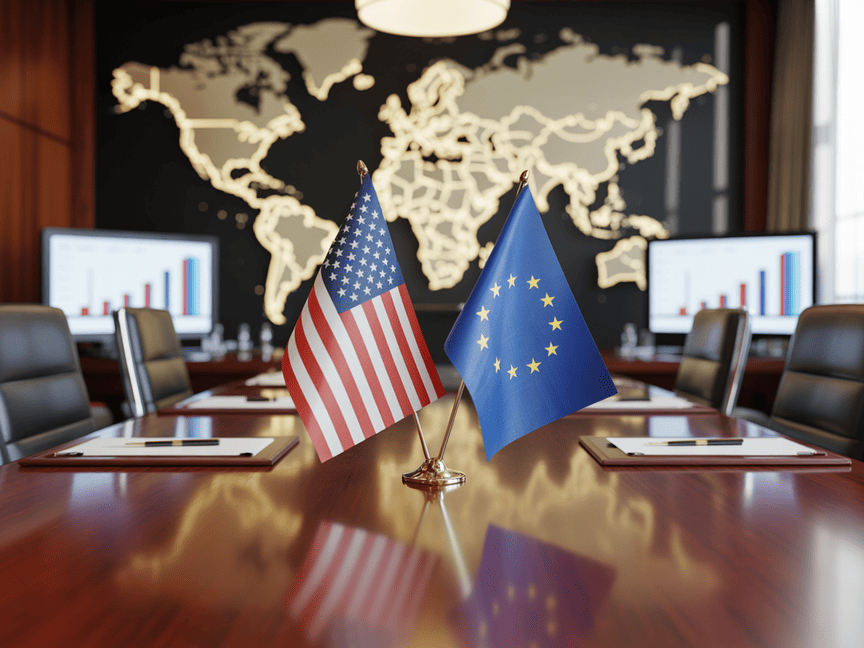The U.S.–EU trade deal announced July 27, 2025 marked a major victory for the U.S., securing favorable terms that protect American interests and foster economic growth under the U.S.–EU trade deal framework.
The U.S. avoided a threatened 30% tariff across most EU goods by negotiating a 15% rate—far below worst-case expectations. Analysts describe this outcome as a strategic win, undercutting harsher proposals while preserving U.S. objectives.
EU commitments include $750 billion in U.S. energy purchases and $600 billion in direct investment by 2028. These pledges promise long‑term expansion for American energy, manufacturing, and infrastructure sectors.
Substantial Benefits for U.S. Economy
By avoiding extreme tariff hikes, the agreement provides clarity and stability for U.S. firms, calming uncertainty that had weighed on markets. Futures indices in the U.S. rebounded on news of the pact, reflecting investor relief.
Experts say the U.S. secured more of its goals than expected. The deal pushes the U.S. trade deficit lower while bolstering investment and export opportunities. The framework aligns closely with U.S. strategic interests and avoids costly escalation.
Advocates argue that uniform tariffs under carefully designed strategy can generate welfare gains of up to 2.2% of U.S. GDP—so long as revenues are used efficiently (e.g. reducing income taxes), and retaliation is avoided.
Mixed Response in Europe Highlights U.S. Edge
In Europe, reactions ranged from cautious acceptance to strong criticism. French officials called the deal a “dark day,” while German and Italian leaders described it as the best practical solution to avoid deeper conflict and preserve access to U.S. markets.
Observers note the agreement is asymmetrical. It exempts U.S. exports—including energy, agricultural goods, aerospace components, semiconductors, chemicals—from tariffs. That zero-for-zero structure benefits U.S. producers across sectors.
Community Implications Locally
Local firms across the San Gabriel Valley, including in Baldwin Park and Rosemead, may benefit as increased EU investment flows support infrastructure and energy projects. Demand for U.S. energy and manufacturing could support job creation in importing logistics and distribution hubs. Exporters may also find improved access to EU markets under stable tariff conditions.
While some sectors face import cost adjustments, the deal’s overall structure supports U.S. competitiveness and economic resilience. It reinforces American leadership in energy and industry while limiting exposure to tariff escalation.
Outlook and Next Steps
As the U.S.–EU trade deal moves into its implementation phase this fall, businesses and policymakers will closely monitor the EU’s follow-through on its $600 billion investment and $750 billion energy procurement commitments. These pledges, if fulfilled, could reshape the U.S. energy and manufacturing sectors by 2028, driving job growth and infrastructure expansion in key regions.
Trade analysts expect continued negotiations to address non-tariff barriers, streamline customs procedures, and expand tariff exemptions to benefit more American exporters. With early reports signaling strong investor and business support, the framework lays the groundwork for a more stable and collaborative transatlantic trade relationship.
For further details and industry reactions, visit the Wall Street Journal’s full coverage of the trade agreement.


